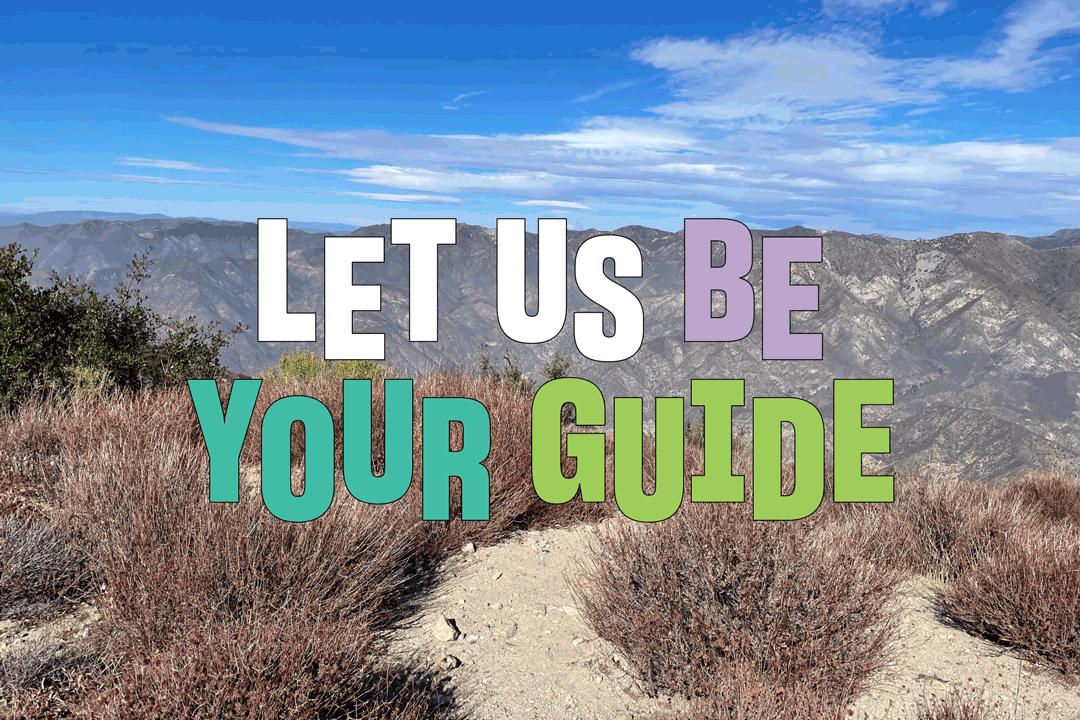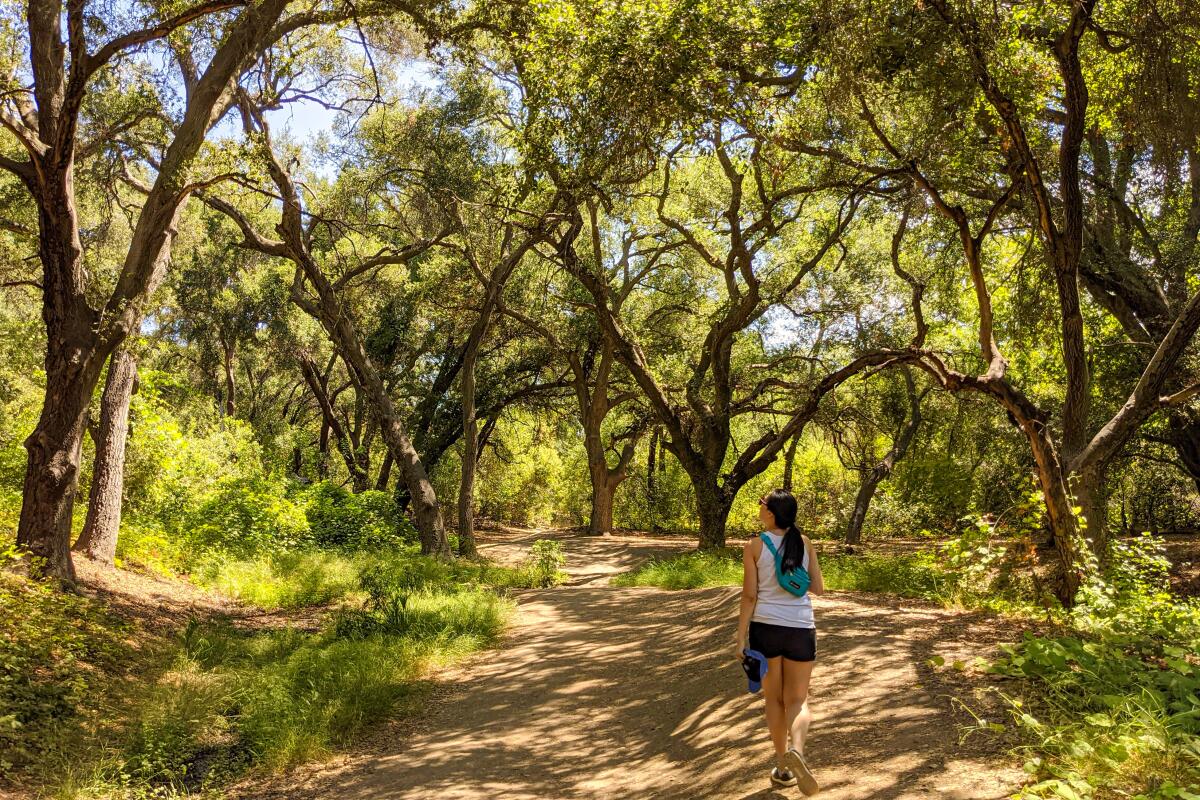
Orange County, the hiking gem you need to know. Here are the 12 best trails
It’s no wonder that trails in Orange County sometimes get overlooked. With mountains to the north and east, it’s easy to miss the hidden gems in the county that’s host to 34 cities. The variety of habitats on these 12 hikes may surprise you: from woodlands to coastal chaparral to a botanical preserve. And did I mention the grove of coastal redwoods? It’s all waiting, with routes good for beginners and veteran hikers. By the way, the high point in O.C. is Santiago Peak at 5,689 feet on Saddleback mountain. It’s a 15-plus-mile exposed and strenuous hike to the top but is not included on the list because the main trailhead is closed.
These 50-plus hikes capture all that L.A. and Southern California has to offer. Use our filters to find the best type of hike by difficulty levels, length and view.

Carbon Canyon Regional Park, Brea
The wide dirt path of the nature trail is well-marked throughout and meanders through dense shrubs and walnut trees (listen for resident towhees) before depositing you under the giant arboreal wonders after just half a mile. The grove of 241 coastal redwoods, the product of a local bank’s seedling promotion in the 1970s, is the largest of its kind in Southern California.
Interpretive signs detail their history, including the efforts of park rangers to preserve them despite Southern California’s arid climate. Among the nearly 100-foot Sequoia sempervirens specimens, you’ll notice the temperature drop more than 10 degrees (as if you need another reason to go). Before heading back, climb the steep trail at the southwestern corner for sweeping views that look down on the grove, as well as hulking Carbon Canyon Dam and the surrounding town of Brea.
Park in dirt or paved lots ($3 weekdays, $5 weekends); dog-friendly. Start at the nature trail from the south parking lot.
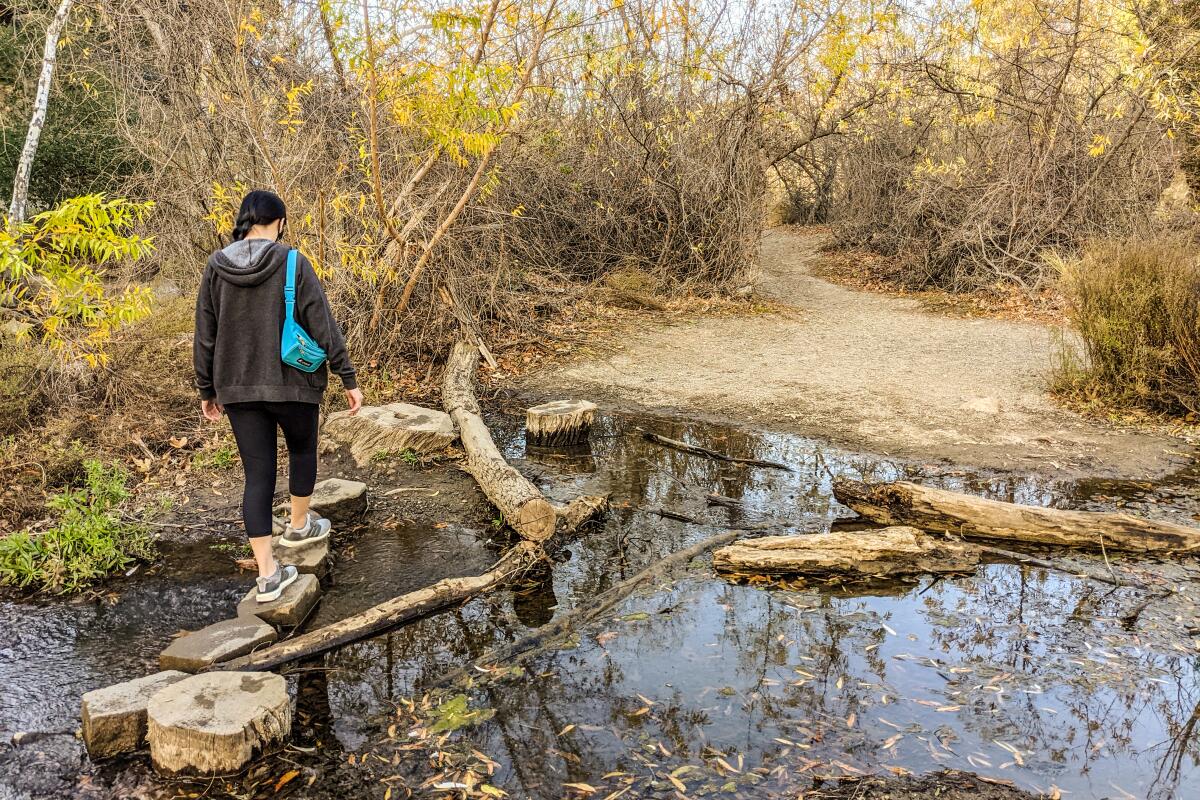
Santiago Oaks Regional Park, Orange
Park in the dirt/paved lots ($3 on weekdays, $5 on weekends); dog-friendly. Start at the Historic Dam Trail at the nature center.
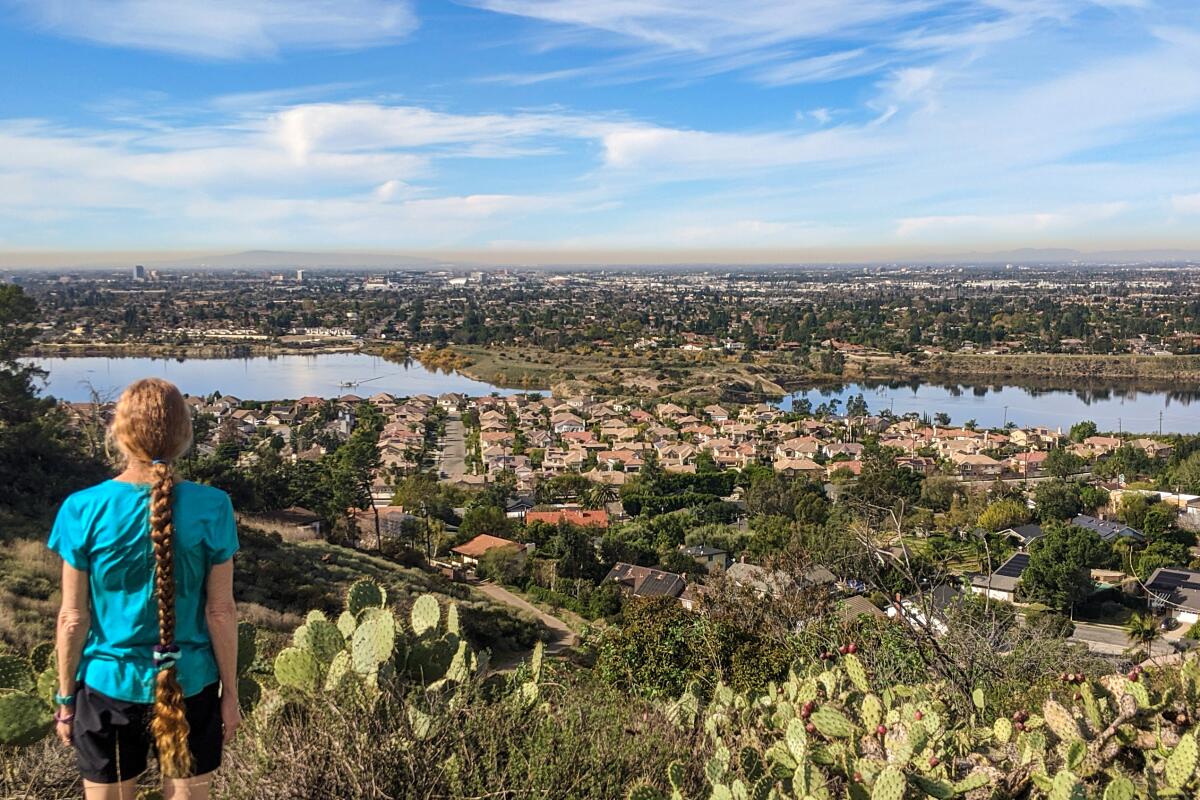
El Modena Open Space and Old Towne Orange, Orange
At Cannon Street and Patria Court, look for a single-track trailhead that climbs 500 feet in just half a mile, rewarding you with views of the Santiago Creek Basin and O.C. suburbia. As you walk by plentiful prickly pear cactus (look and listen for cactus wren), you can spot downtown Los Angeles as well as the peaks of the San Gabriels and Santa Anas and even Catalina Island on a clear day. The trail connects with Cannon Street, where you will most likely complete your loop without having seen a single Orange County resident. Head to the Orange Metrolink station to find free parking and head east on Chapman Avenue to grab a local lager at Chapman Crafted Beer (try the red ale with coffee) before your trek through the city’s Old Towne district. Take time to explore the incredibly picturesque area that’s home to the second-largest concentration of historical buildings in the state as well as the pristine Chapman University grounds.
Park on the street or in a free paved lot. Dog-friendly. Start at Cannon Street and Patria Court for the 2.5-mile trail and two-mile walk on city streets to complete the loop.
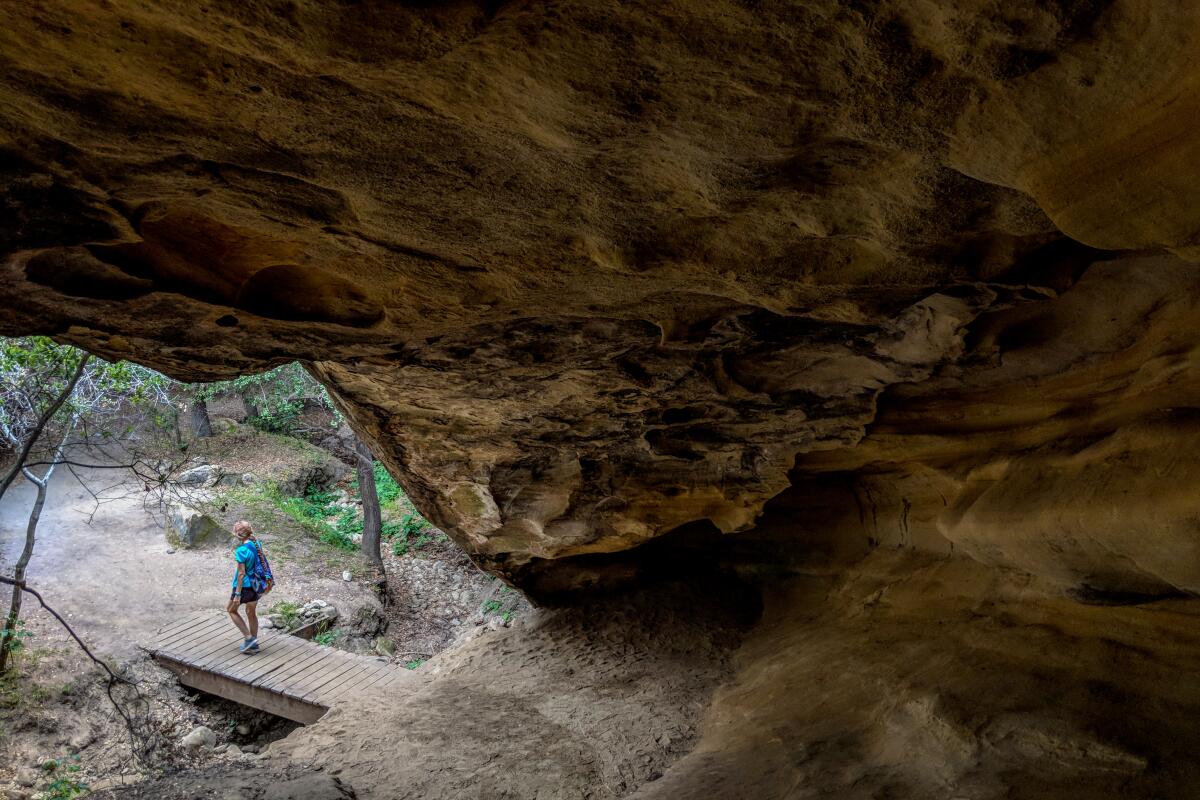
Aliso and Wood Canyons Wilderness Park, Laguna Niguel
Park in the free paved lot; dog-friendly. Start at the Aliso Creek Trail at the visitor center.
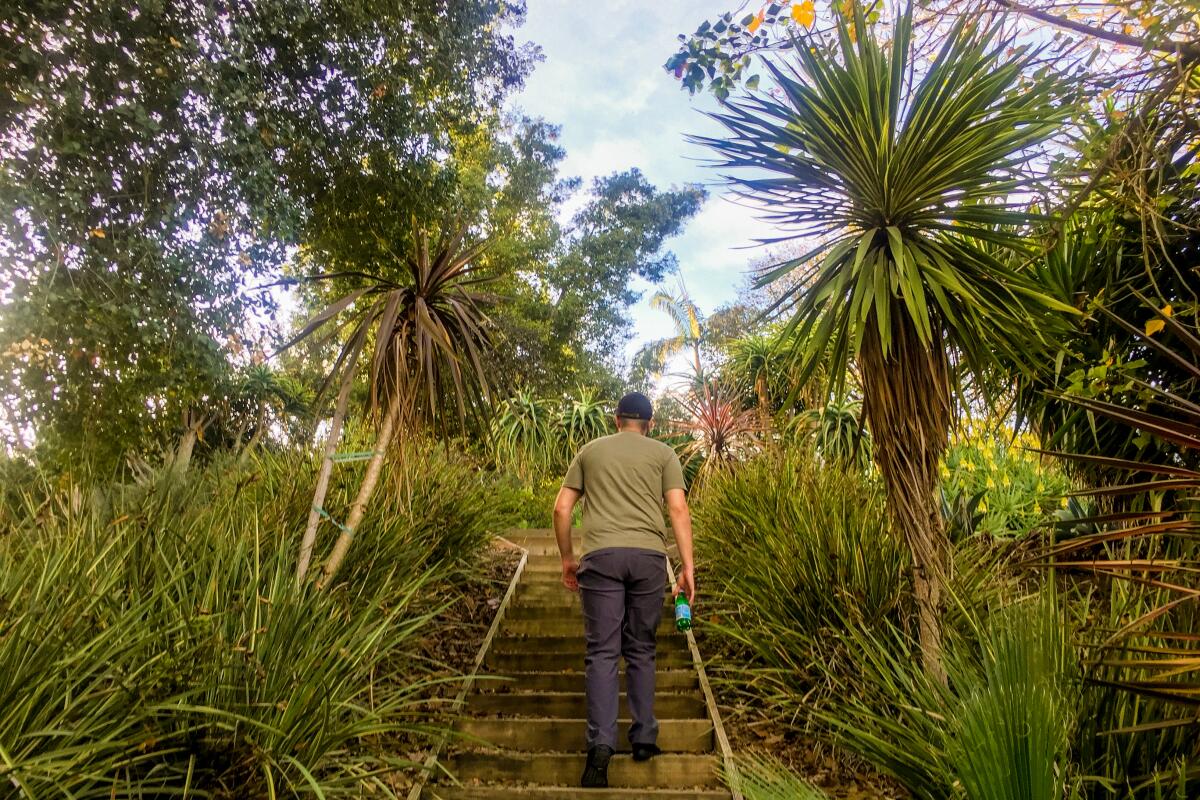
Niguel Botanical Preserve, Laguna Niguel
Park in the free paved lot; no dogs allowed. Start at the Crown Valley Community Park, next to the amphitheater on this DIY ramble.
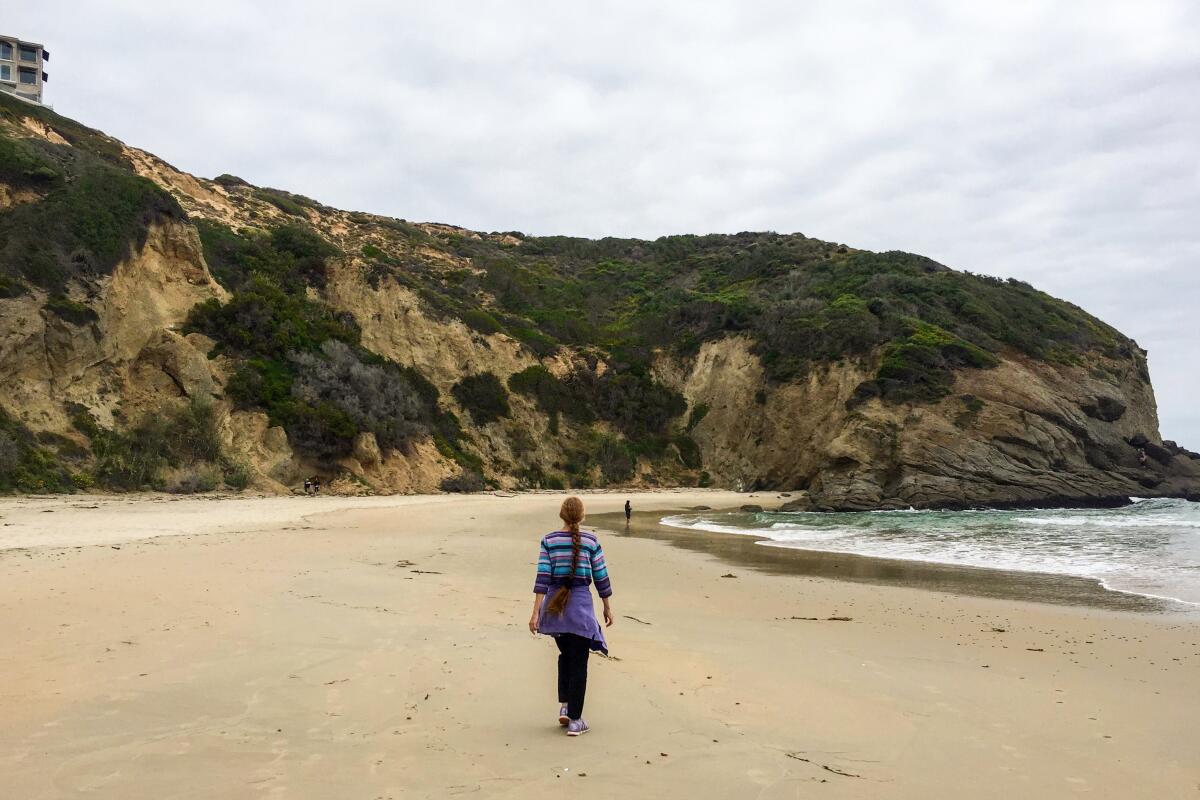
Dana Point Headlands (The Strand), Dana Point
You’ll eventually get deposited at some switchbacks that lead you to the sand. Here, look up for local brown pelicans. When you’re ready to leave (will you ever be?), find the leg-busting stairs at the north end of the beach (or keep heading north to Salt Creek Beach) that parallel a surprise funicular operated by the city and lead to expansive ocean vistas. When you reach Selva Road, look for the aptly named Passage des Palmiers for a paved uphill test among — you guessed it — palm trees that connect with Hilltop Conservation Park, offering fantastic views of the Dana Point Harbor. Street of the Green Lantern leads you back to the interpretive center, but you can extend your trip by heading down Cove Road to walk along the marina all the way to Doheny State Beach.
Park in the free paved lot; no dogs allowed. Start at the Dana Point Nature Interpretive Center.
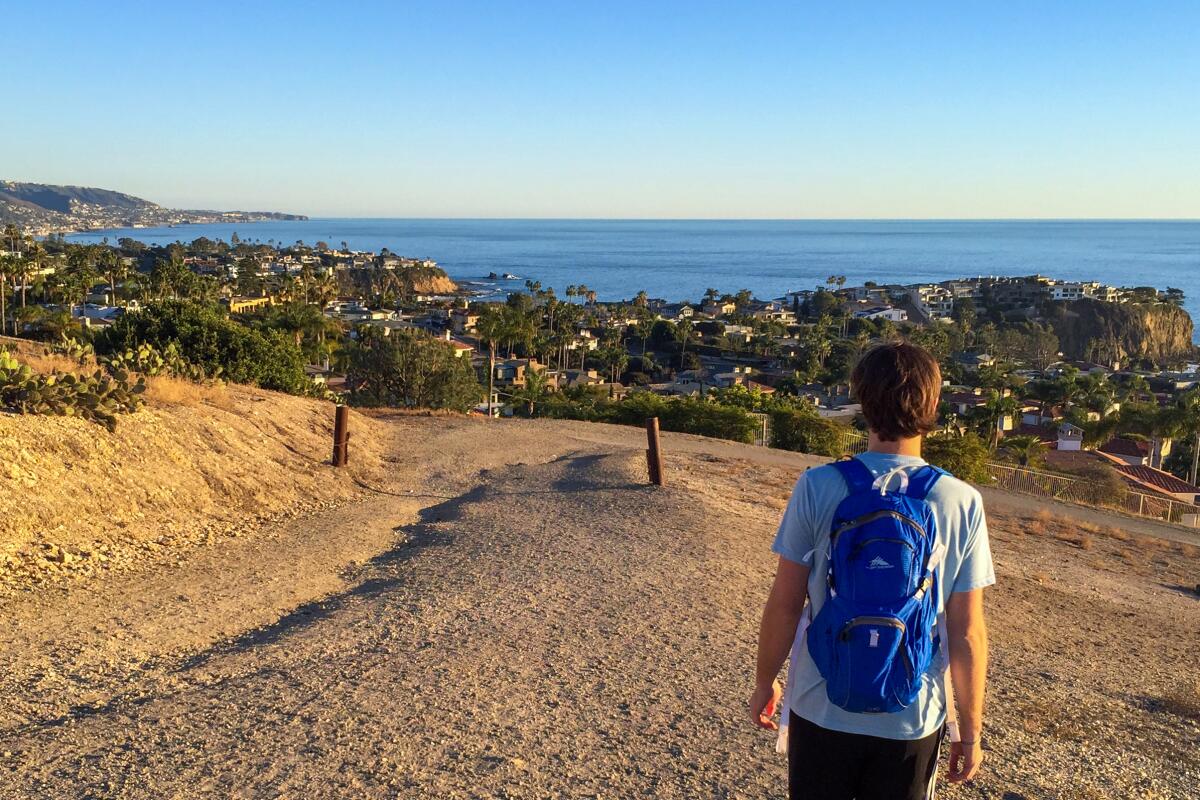
El Moro Canyon at Crystal Cove State Park, Laguna Beach
The marquee route is a three-mile stretch along Moro Ridge, the highest point in the park and thus the most epic spot for views. Soak it in (before doing a cool-down soak later) and look toward Palos Verdes Peninsula in the north and as far south as San Diego; Catalina and San Clemente islands may be prominently present too. You’ll get a chance to descend into Moro Canyon among oaks and sycamores, where you may run into overnighters. Yes, this is also a great spot to test out that new backpacking gear with three hike-in campgrounds that require advance reservations (Upper Moro, Lower Moro, Deer Canyon); check with the rangers before heading out. On your trek back toward the coast, look for bottlenose dolphins if you brought the binocs. If not, enjoy the surrounding coastal sage brush, lemonade berry and the luminous red flowers of paintbrush as you complete the loop. It doesn’t take a crystal ball to predict you’ll be back to hike this one again.
Pay to park in the paved lot; no dogs allowed. Start at the No Dogs Trail next to the ranger station.

San Clemente Beach Trail, San Clemente
Park in the paved lot ($1.50 an hour) or on the street. Dogs are allowed on the trail but not on the beach. Start at North Beach, on the south end of the San Clemente Metrolink station parking lot.
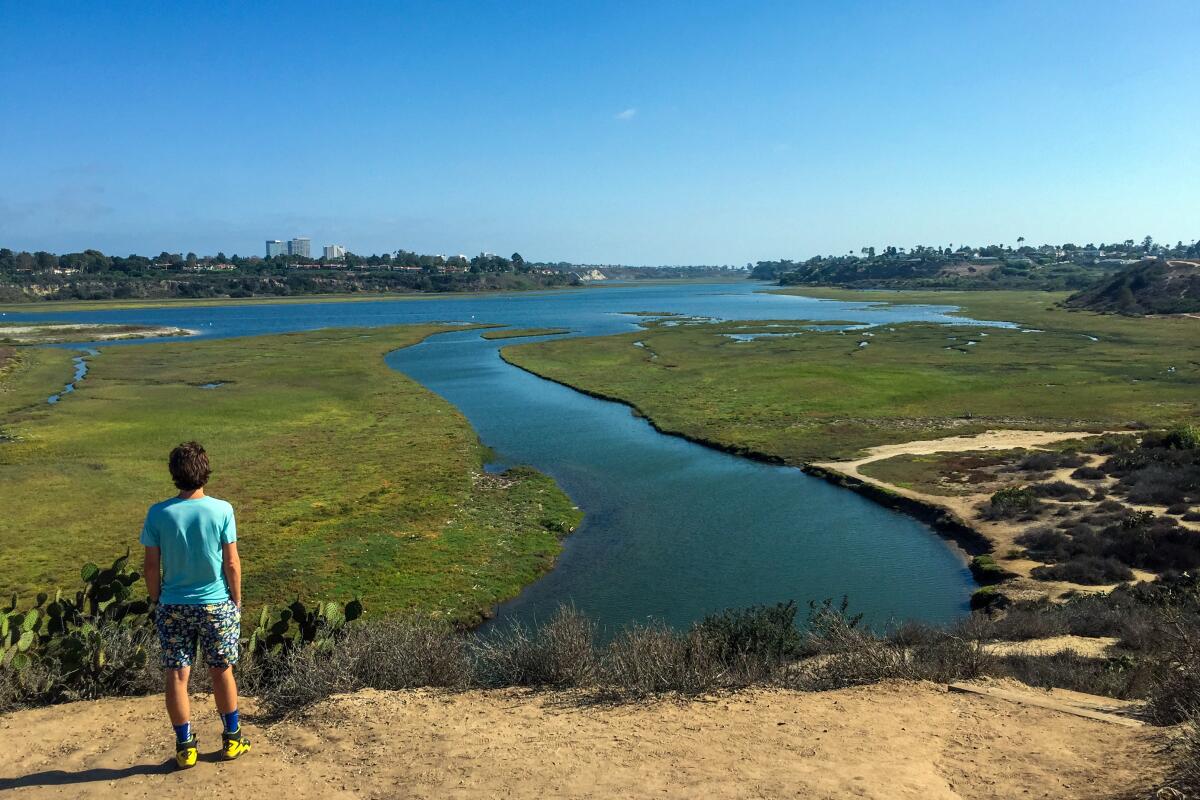
Upper Newport Bay Preserve, Newport Beach
Start at the Peter and Mary Muth Interpretive Center, which boasts a rooftop observation deck for breathtaking views of the entire bay. Search the skies for some of the 200-plus species that call the estuary home (some 35,000 can be found at any one time during winter migration), from great blue herons to peregrine falcons to the endangered California least tern. Throughout the trek, there are spur trails that take you through coastal sage scrub to reach eye level with the lagoon. Here, look for stingrays in the water and saltmarsh bird’s beak, an endangered indigenous herb. After the trail reaches the park boundary, you may continue on streets (Irvine Avenue to Dover Drive to Pacific Coast Highway) — passing Castaways Park for more sweeping marine views — to reach the Newport coast to grab a bite and check out some yachts along the bay.
Park in the dirt lot; dog-friendly. Start on the Bayview Trail at the interpretive center.
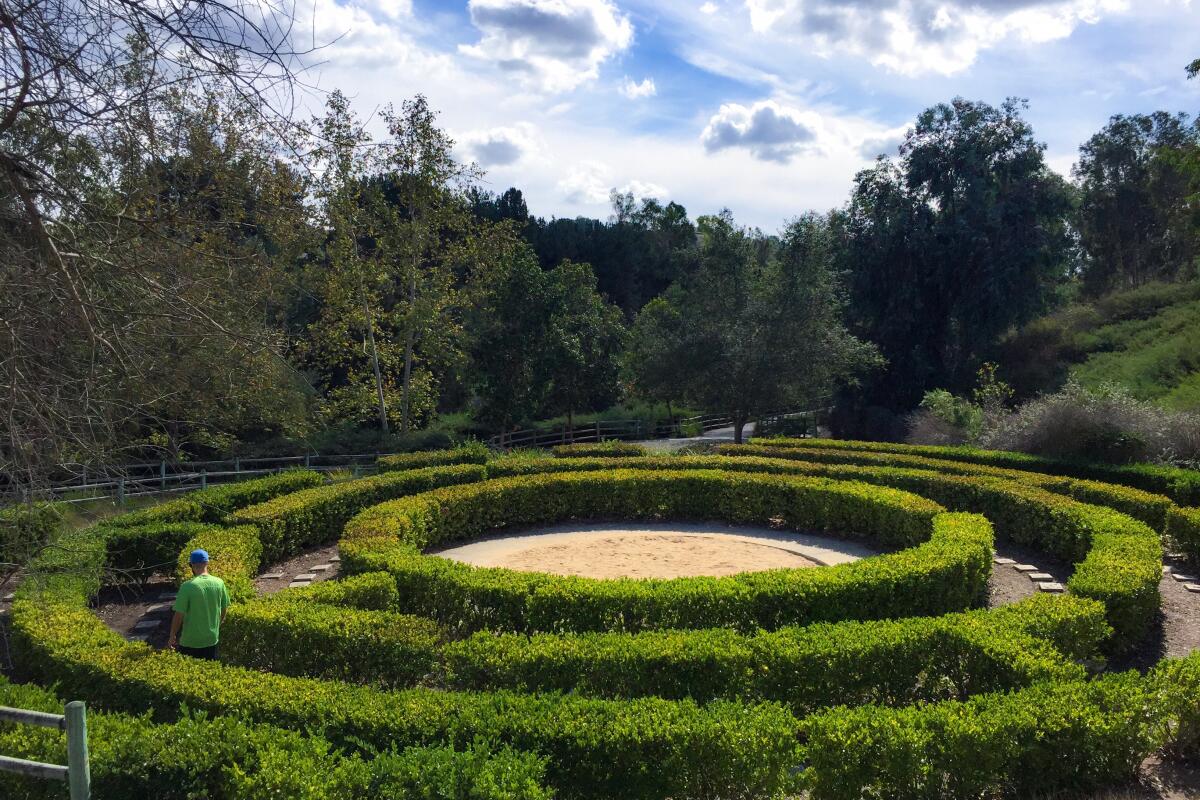
Oso Viejo Community Park, Mission Viejo
You’ll constantly find nature and art blended together on this hike, including a community-built peace obelisk honoring 9/11 victims. You will also find an awesome Victorian-influenced hedge maze that has stepping stones endearingly painted by local children. After checking out a butterfly garden and another bridge crossing, look for a beautiful, colorful mosaic path flanked by stunning columns made from recycled glass. After climbing out of the mini canyon, don’t miss the playground that features adorable bear statues (Oso Viejo, after all, means “old bear” in Spanish) before heading back to the starting point. Or do the loop all over again.
Park in a paved lot; dog-friendly. Start at Oso Viejo Community Park.
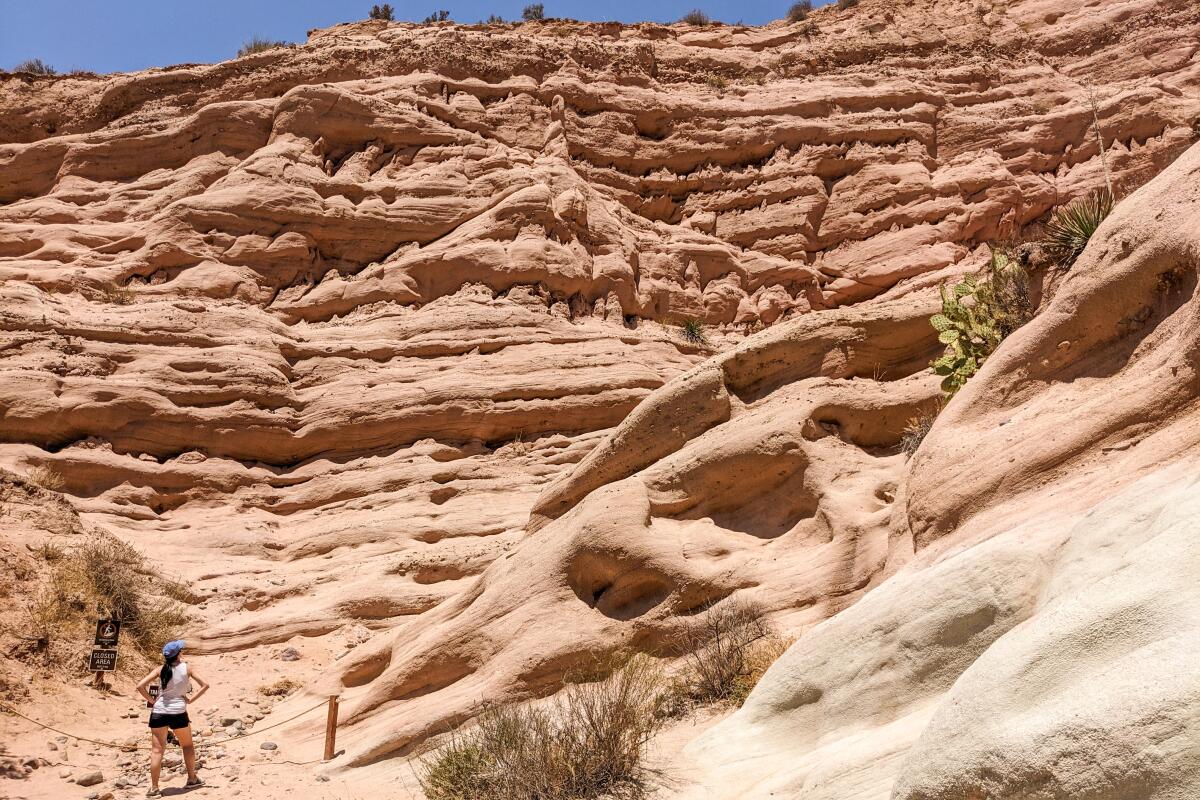
Whiting Ranch Wilderness Park, Trabuco Canyon
The wide dirt path meanders through heavily shaded riparian and oak woodland canyon for most of the journey, with multiple stream crossings over Borrego, Serrano and Aliso creeks. These provide ample opportunities for wildlife viewing, from mule deer to striped racer snakes to acorn woodpeckers. At the intersection with the Mustard Loop, find the Red Rock Canyon marker just past a large wooden trail board. As you head north on a sandy wash, the red stone pinnacles (siltstone, sandstone and mudstone, to be exact) come into view, looming above the chaparral-dotted canyon. In just half a mile, you’ll find yourself at the base of the awe-inspiring geological gems, which were sculpted by water and wind over millions of years. Though interpretive signs stop you from climbing the vibrant cliffs, you can enjoy them from multiple vantage points, which is more than enough to feel worlds away from the suburbia that surrounds you. Yep, it’ll rock your world.
Park in the paved lot ($3); no dogs allowed. Start at the Borrego Canyon Trail off Portola Parkway.
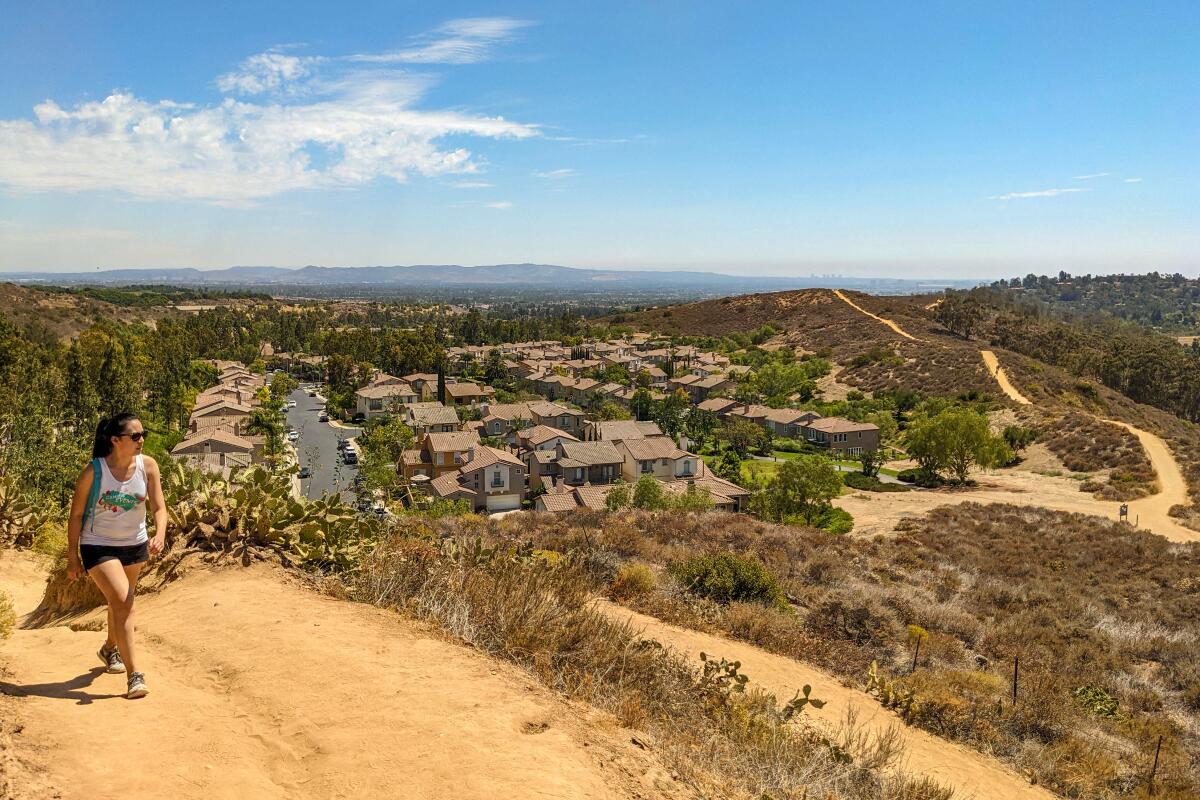
Peters Canyon Regional Park, Orange
For the most comprehensive tour of the green space’s beauty, start a six-mile loop at the Lake View Trail that circles the 55-acre Upper Peters Canyon Reservoir. The trail winds through riparian and freshwater marsh environments dominated by sycamores, cottonwood and black willows. The lake, once used to irrigate Irvine Ranch citrus groves, is now home to a variety of migrating waterfowl, such as snowy egrets, which often hunt along the shore. At the southeastern corner of the reservoir, you will connect with your second loop, the East Ridge View Trail. Search the skies for red-tailed and Cooper’s hawks (or the shrubs for rufous-crowned sparrows) as you climb to the park’s high point.
Here, find a well-placed bench to enjoy stunning 360-degree views of Orange County that stretch from the coast to the San Gabriels. After a roller-coaster descent, you will eventually connect with the Peters Canyon Trail at the lower reservoir, which takes you through coastal sage scrub and grassland communities back to the Lake View Trailhead.
Park in the dirt lot ($3); dog-friendly. Start at the Lake View Trail next to the ranger station.
Sign up for The Wild
We’ll help you find the best places to hike, bike and run, as well as the perfect silent spots for meditation and yoga.
You may occasionally receive promotional content from the Los Angeles Times.
